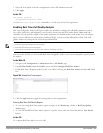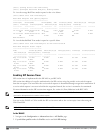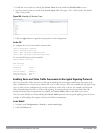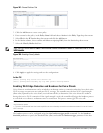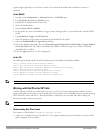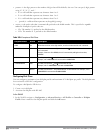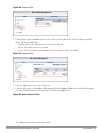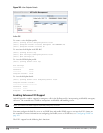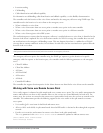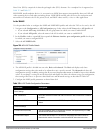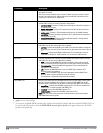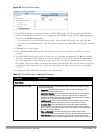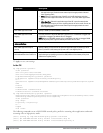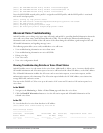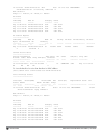
l Location tracking
l Call handling
l Caller identification and callback capability
For information on call-handling, caller identification and callback capability, see the RedSky documentation.
The controller tracks the location of the voice clients and notifies the emergency call server using SNMP traps. The
controller notifies the location of a voice client to the emergency server:
l When it identifies a voice client
l When a voice client roams from one access point to another access point in the same controller
l When a voice client roams from one access point to another access point in a different controller
l When a voice client registers with a PBX system
The notification process ensures that the emergency call server is notified whenever a voice client is identified or the
location of the client is updated. If a voice client roams outside of a WLAN coverage, the controller does not send
any notifications to the emergency call handling system. This may happen when there is a sudden loss of WLAN
coverage due to extreme conditions such as, fire accidents. In such cases, the last associated access point will be the
location of the voice client.
NOTE: The controller tracks the location only for voice clients. To track the location of a remote voice client, the administrator must
configure the location of the remote access point in the controller or emergency call server.
The emergency call server queries the controller using the SNMP 'get' request to get the location of a specific
emergency caller. In response to the location query, the controller sends the following parameters to the emergency
server:
l Client IP Address
l Client Mac Address
l AP Name
l AP Wired MAC
l AP Location
l AP Mode
l Controller IP Address
The controller also supports location queries for the clients that are not identified as voice clients on the controller.
Working with Voice over Remote Access Point
Voice traffic support is enhanced on split tunnel mode over a remote access point. The voice traffic management for
remote and local users are done on the controller. However, the sessions are created differently for both users. For
remote users, the sessions are created on the remote access point and for local users, the sessions are created on the
controller. This enhancement provides the following support for the voice traffic in the split tunnel over remote
access point:
l Voice traffic QoS is consistent for both local and remote users
l All voice ALGs work reliably in split tunnel mode when the PBX traffic is destined to flow through the corporate
network.
l Provides voice statistics and counters for remote voice clients in the split tunnel mode
The flag parameter in the show voice client-status command is updated to indicate remote users.
(host) #show voice client-status
Voice Client(s) Status
DellPowerConnectW-SeriesArubaOS6.2 | User Guide Voiceand Video | 714



